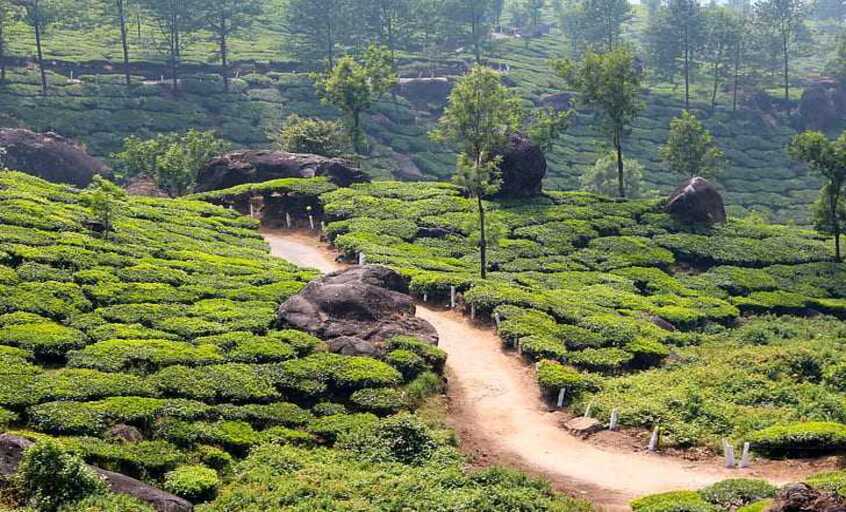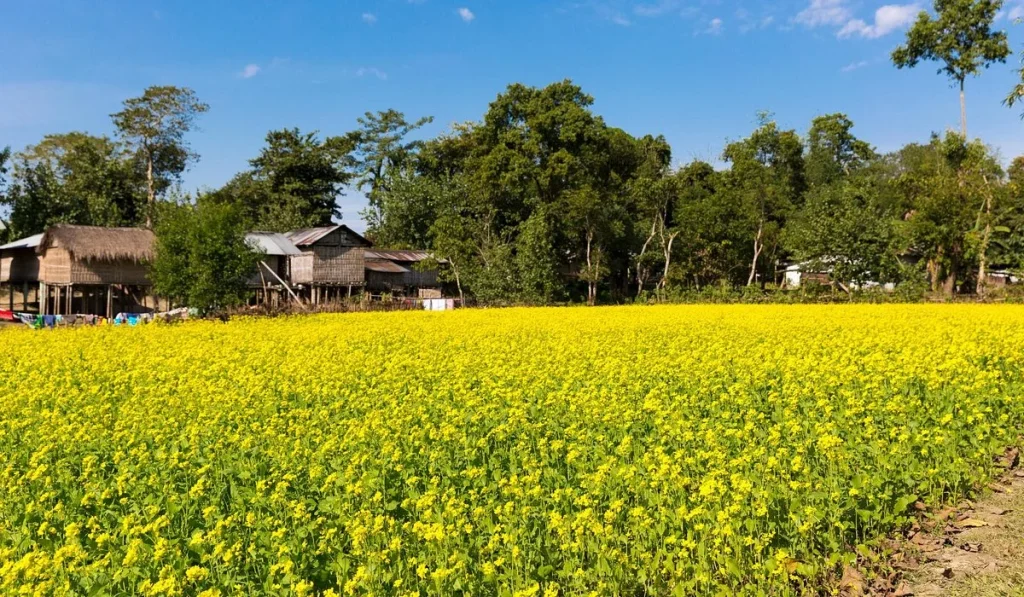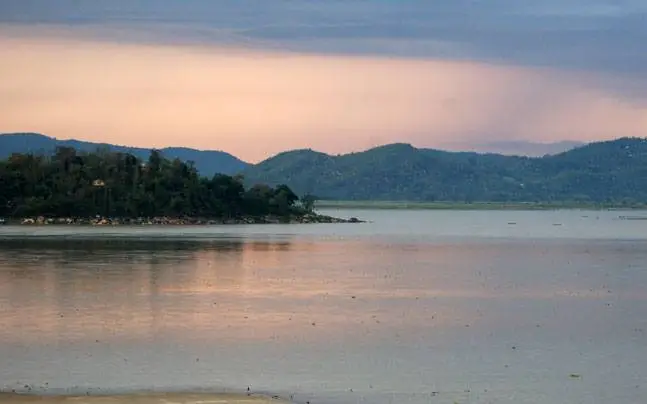Best time to visit Jorhat: The Best Seasons for Travelers
Jorhat is a special town in Assam, India, known for its beautiful tea gardens and the famous Kaziranga National Park where you can see lots of animals. It’s a place that many people like to visit because it has pretty scenery and a rich culture. If you want to have the best time there, it’s important to pick the right time to go since there are rainy seasons, cold winters, and fun local festivals happening throughout the year. Knowing the different seasons in Jorhat can help you plan your trip better. If you want to enjoy peaceful tea garden visits, fun cultural festivals, or exciting wildlife trips, it’s important to choose the right time to go. In this guide, we’ll look at the best time to visit Jorhat so you can have the best adventure in this beautiful place.
Winter Season in Jorhat (November to February)

The winter season in Jorhat, spanning from November to February, is characterized by cool and pleasant weather, making it an ideal time for both locals and tourists to explore the region. Temperatures typically range from 8°C to 20°C, providing a refreshing climate that contrasts sharply with the humid monsoon months. During this time, the landscape transforms, adorned with lush greenery and vibrant flora, as the region prepares for the harvest season. Festivals and cultural events abound, offering a glimpse into the rich heritage of Assam. The winter months in Jorhat not only enhance the natural beauty but also create a vibrant atmosphere that draws visitors to experience its unique charm and hospitality.
Summer Season in Jorhat (March to June)

The summer season in Jorhat, spanning from March to June, is characterized by rising temperatures and increased humidity, making it a vibrant yet challenging time for residents and visitors alike. As the days grow hotter, temperatures can reach the mid-30s Celsius, prompting a rich tapestry of flora and fauna to flourish, especially in the lush tea gardens that Jorhat is famous for. This season is also significant for local festivals and cultural events, as communities come together to celebrate the abundance of the region’s natural beauty. Additionally, the summer months provide an opportunity for agricultural activities, as farmers prepare for the upcoming monsoon season, planting crops that will thrive in the fertile soil nourished by the rain. Overall, summer in Jorhat is a dynamic and essential part of the region’s climate and culture, marked by both work and celebration.
Book here Assam tour packages.
Monsoon Season in Jorhat (July to October)

The monsoon season in Jorhat, which spans from July to October, transforms the region into a lush, green paradise, as heavy rains nurture the landscape and replenish water resources. During this period, the town experiences a significant increase in rainfall, often leading to cooler temperatures and heightened humidity. While the monsoon brings much-needed water to support agriculture, particularly tea plantation cultivation, it can also present challenges such as flooding and landslides in certain areas. Local communities often adapt their daily routines and farming practices to accommodate the unpredictable weather, making the monsoon season a vital part of Jorhat’s ecological and economic rhythm.
Tips for travelling to Jorhat
1. Weather Consideration: Depending on your preferences, you may want to plan your trip to Jorhat according to the weather. The winter season (November to February) offers cool and pleasant weather, while the summer season (March to June) brings rising temperatures and increased humidity. The monsoon season (July to October) is characterized by heavy rainfall.
2. Cultural Festivals: Jorhat is known for its vibrant cultural festivals and events. If you’re interested in experiencing the local culture, consider planning your trip around one of these celebrations to immerse yourself in the traditions and heritage of the region.
3. Tea Garden Visits: Jorhat is famous for its lush tea gardens. If you’re a fan of tea or simply enjoy beautiful natural landscapes, be sure to include a visit to the tea gardens in your itinerary. The scenery is particularly stunning during the winter and monsoon seasons.
4. Wildlife Trips: If you’re interested in wildlife, consider visiting the Kaziranga National Park, where you can see a variety of animals. Keep in mind that the best time for wildlife trips may vary depending on the specific animals you hope to see.
5. Packing Essentials: Regardless of the season, it’s important to pack appropriate clothing and gear. For the winter season, pack layers to stay warm. In the summer, lightweight and breathable clothing is essential. During the monsoon season, consider packing rain gear and waterproof footwear.
6. Local Cuisine: Don’t miss the opportunity to savor the local cuisine in Jorhat. Assamese food is known for its unique flavors and use of indigenous ingredients. Be sure to try traditional dishes and delicacies during your visit.
Conclusion
The best time to visit Jorhat is during the winter months from October to March. This period offers pleasant and cool weather, ideal for exploring the region’s tea gardens, cultural sites, and nearby attractions like Majuli Island. Temperatures range from 7°C to 25°C, making it comfortable for outdoor activities. Moreover, cultural events and festivals like the Majuli Festival in November add vibrancy to the visit.
Here you can also check our Assam tour packages.
People also ask about the Best time to visit Jorhat
1. What is the best time to visit Jorhat?
The ideal time to visit Jorhat is from October to March. The weather is pleasant, with cool temperatures and less rainfall, making it perfect for sightseeing and outdoor activities.
2. Can I visit Jorhat during the summer?
While you can visit Jorhat in summer (April to June), it is generally hot and humid with temperatures reaching up to 35°C. If you can handle the heat, it’s less crowded, but it may not be as comfortable for outdoor activities.
3. Is the monsoon season a good time to visit Jorhat?
Monsoon (July to September) brings heavy rainfall, making it a less favorable time to visit. However, the region’s greenery is at its peak, and tea plantations look beautiful, but travel may be disrupted due to rain.
4. What is the weather like during winter in Jorhat?
Winter (October to March) is the best time to visit. The temperature ranges from 7°C to 20°C, and the cool climate makes it perfect for exploring Jorhat’s attractions like Majuli Island, tea estates, and historical sites.
5. Are there any festivals in Jorhat during the best time to visit?
Yes, visiting during winter allows you to experience the vibrant Raas Mahotsav in November, celebrated on Majuli Island. You can also witness the Tea Festival in November-January, which showcases the culture and tea heritage of Assam.
6. Is Jorhat crowded during the peak season?
The tourist season from October to March sees a moderate influx of visitors, especially during festivals. However, it is not overly crowded, so you can still enjoy a relaxed visit without long queues or overcrowding.
7. What should I pack if visiting Jorhat in winter?
Light woolen or warm clothing is recommended during the winter months, as evenings and early mornings can be chilly. Don’t forget comfortable walking shoes for exploring the tea gardens and cultural sites.
